September 9, 2024 · 13 min read
The Role of Digital Transformation in Modern Project Management

Shaimaa Badawi
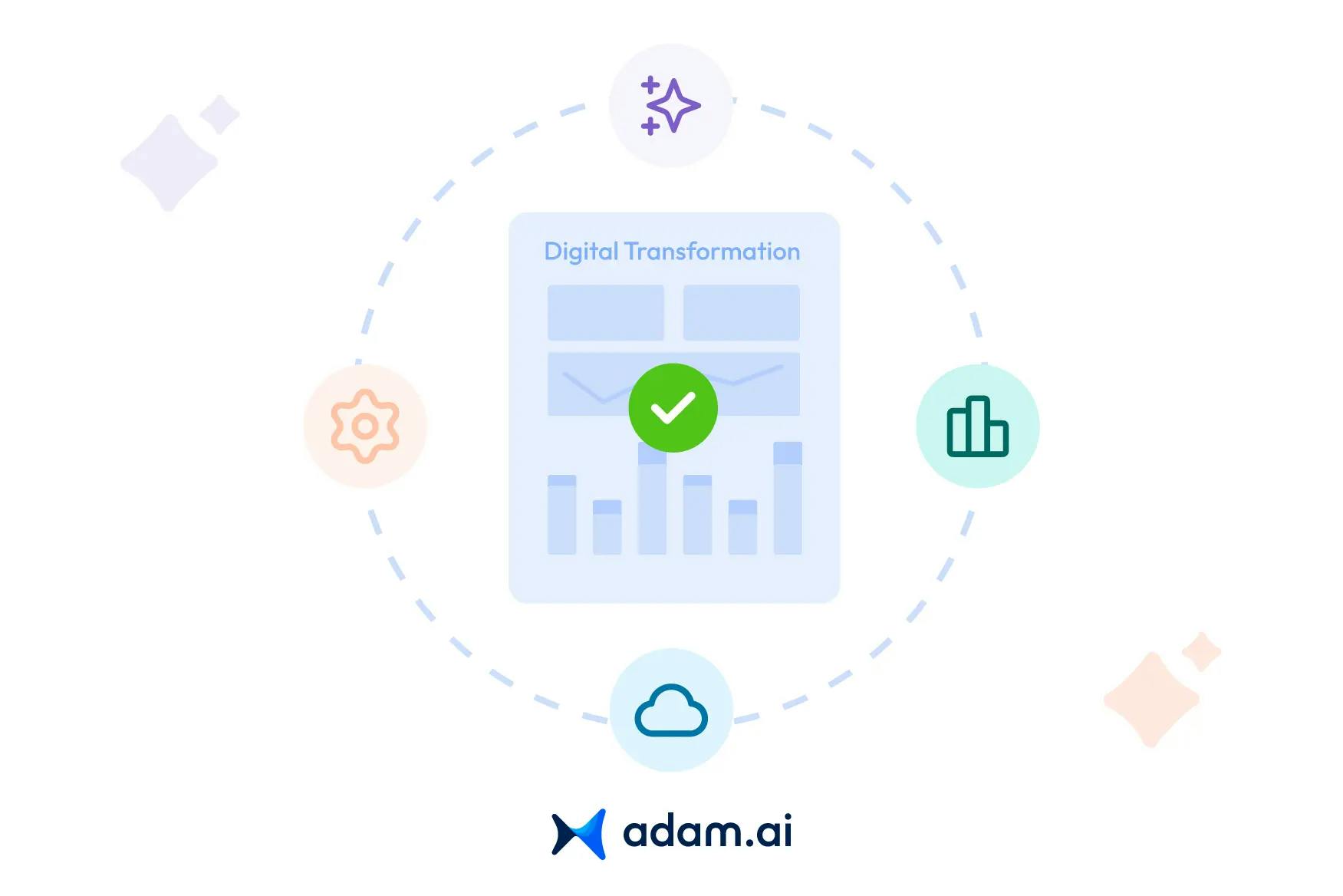
Digital transformation has become a critical factor for organizations looking to stay competitive. As project management evolves with advanced tools and methodologies, teams can streamline processes, enhance collaboration, and boost efficiency. These technologies are changing how projects are executed, making it easier to manage complex workflows, adapt to shifting market demands, and deliver results with greater speed and precision. Explore how digital transformation is redefining project management and setting new benchmarks for success.
What is digital transformation in project management?
Digital transformation in project management refers to the integration of advanced digital technologies and processes to enhance the efficiency, collaboration, and overall execution of projects. It fundamentally reshapes traditional project management by automating workflows, improving data-driven decision-making, and fostering real-time collaboration across geographically dispersed teams. This transformation involves adopting tools like cloud computing, artificial intelligence (AI), data analytics, and automation to streamline operations and increase productivity.
For project managers, digital transformation also means shifting to agile methodologies that allow greater flexibility and adaptability in response to changing market conditions and client needs. It goes beyond merely implementing technology; it’s about driving innovation, ensuring continuous improvement, and aligning project objectives with broader business goals. This transition helps project managers deliver projects faster, with better outcomes, and ensures the organization remains competitive.
How is digital transformation driving change in project management?
Digital transformation is driving significant change in project management by reshaping how projects are planned, executed, and delivered. Key areas of transformation include:
- Automation of repetitive tasks: Digital tools streamline workflows by automating routine tasks like scheduling, reporting, and budget tracking, freeing up project managers to focus on strategic decision-making. This leads to greater efficiency and reduces human error.
- Data-driven decision making: With the integration of data analytics, project managers now have access to real-time data that provides insights into project performance, resource allocation, and potential risks. This allows for informed, evidence-based decisions that improve project outcomes.
- Improved collaboration: Digital platforms enable seamless communication and collaboration across teams, regardless of location. Tools like cloud-based project management software, video conferencing, and instant messaging facilitate real-time updates and feedback, ensuring that everyone is aligned and informed throughout the project lifecycle.
- Agile methodologies: Digital transformation supports the adoption of agile project management practices, which emphasize flexibility, adaptability, and continuous improvement. This shift allows project managers to quickly respond to changes in client needs, market conditions, or project scope, leading to more efficient and responsive project execution.
- Enhanced stakeholder engagement: Digital tools improve stakeholder engagement by providing clear, accessible dashboards that offer transparency into project progress, timelines, and outcomes. This fosters trust, ensures accountability, and enables more proactive management of stakeholder expectations.
- Risk management: Digital transformation enhances the ability to identify, assess, and mitigate risks through predictive analytics and real-time monitoring. This helps project managers address potential issues before they become critical, reducing delays and cost overruns.
Why is cross-departmental collaboration essential in digital project management?
Cross-departmental collaboration is essential in digital project management for several key reasons:
- Enhanced communication and coordination: Digital transformation often impacts multiple areas of an organization, from IT and marketing to finance and operations. Cross-departmental collaboration ensures that all departments are aligned, breaking down silos and fostering open communication. This coordination helps avoid miscommunication and ensures that every team is working toward shared project goals.
- Holistic problem solving: Complex digital projects require diverse expertise from various departments. When teams collaborate across departments, they bring unique perspectives and skills to the table, allowing for more comprehensive solutions to challenges. This holistic approach leads to more innovative problem-solving and efficient decision-making.
- Improved resource utilization: Collaboration across departments allows for better allocation and optimization of resources. By pooling talent, technology, and information, project managers can ensure that the right resources are available at the right time, avoiding bottlenecks and minimizing delays.
- Agility and flexibility: Digital projects often require rapid adjustments due to shifting priorities, market conditions, or technological advances. Cross-departmental collaboration enables faster response times by ensuring that all relevant teams are involved in the decision-making process, making it easier to pivot when necessary without slowing down the project.
- Alignment with business objectives: Digital transformation initiatives typically align with the broader strategic goals of the organization. Cross-departmental collaboration ensures that each department’s work is contributing to these larger goals, improving strategic alignment and ensuring the project delivers value across the business.
- Risk mitigation: By involving multiple departments, potential risks can be identified and addressed more effectively. Collaboration fosters a shared responsibility for managing risks, as each department can offer insights into potential challenges and contribute to risk mitigation strategies.
How can C-level executives implement digital transformation in project management?
C-level executives play a crucial role in implementing digital transformation in project management by providing leadership, strategic vision, and the necessary resources to drive change. Here’s how:
1. Establish a clear vision and strategy
C-level executives must define a clear vision for how digital transformation aligns with the organization’s long-term business goals. This involves outlining the strategic objectives of digital initiatives and ensuring that project management efforts are aligned with these goals. Executives need to communicate this vision effectively across all departments to ensure everyone is working toward the same outcomes.
2. Invest in the right technology
Digital transformation requires investment in the right tools and technologies to enable efficient project management. C-level executives should ensure that project management teams have access to advanced tools such as AI, data analytics, cloud-based platforms, and automation solutions. These tools can enhance communication, streamline workflows, and provide real-time insights, leading to better project outcomes.
3. Foster a culture of innovation and agility
Digital transformation is not just about technology; it’s also about changing the organization’s culture. C-level leaders need to promote a culture that embraces innovation, agility, and continuous improvement. This involves encouraging teams to adopt agile methodologies, experiment with new approaches, and learn from failures to improve future project outcomes.
4. Empower cross-departmental collaboration
C-level executives should break down silos and encourage cross-departmental collaboration to ensure that digital transformation initiatives are implemented smoothly across the organization. By promoting teamwork between departments such as IT, marketing, finance, and operations, executives can ensure that projects benefit from diverse expertise and are aligned with the organization's overall strategy.
5. Provide resources and training
Executives need to ensure that project management teams have the necessary resources, including skilled personnel and training, to handle digital transformation. As new technologies are introduced, project managers and their teams may require upskilling to adapt to new tools and methodologies. C-level leaders should prioritize ongoing training and development programs to ensure their teams are equipped to succeed in a digital environment.
6. Monitor progress and adjust strategy
Digital transformation is an ongoing process, and C-level executives must continuously monitor the progress of digital initiatives. This includes setting clear performance metrics, tracking KPIs, and using data analytics to assess the success of projects. Executives should remain flexible and adjust the strategy as needed to address any emerging challenges, risks, or changes in market conditions.
7. Apply change management
Implementing digital transformation often involves significant changes to processes, workflows, and organizational structure. C-level leaders should embrace effective change management practices, ensuring that employees are engaged and that any resistance to new systems or processes is managed through clear communication, training, and support.
What are the key digital tools reshaping project management?
Several key digital tools are reshaping project management by improving collaboration, streamlining workflows, enhancing data-driven decision-making, and increasing overall efficiency. Here are some of the most impactful ones:
1. Cloud-based project management platforms
Cloud-based platforms like Trello, Asana, Monday.com, and Microsoft Project have revolutionized project management by offering real-time collaboration, task management, and centralized communication. These tools allow team members to access project information, track progress, and collaborate from anywhere, breaking down geographical barriers and fostering cross-departmental cooperation.
2. Collaboration tools
Platforms like Slack, Microsoft Teams, and Zoom have enhanced communication and collaboration, particularly for remote teams. These tools offer instant messaging, video conferencing, and file-sharing capabilities, enabling teams to communicate in real time, manage projects more effectively, and foster a more connected work environment.
3. Data analytics and reporting tools
Advanced analytics platforms such as Tableau, Power BI, and Google Data Studio provide project managers with powerful insights into project performance. These tools help in tracking KPIs, project milestones, and resource allocation while enabling data-driven decision-making to optimize outcomes. They help identify trends, measure success, and provide a clearer understanding of project risks and opportunities.
4. Automation tools
Automation platforms like Zapier and UiPath streamline repetitive tasks, allowing project teams to focus on more strategic activities. By automating workflows such as task assignment, progress tracking, and notifications, these tools reduce manual effort, save time, and minimize the risk of errors, which enhances overall project efficiency.
5. Agile project management tools
For teams adopting Agile methodologies, tools like Jira and Kanban boards are essential. These tools enable teams to visualize workflows, manage backlogs, prioritize tasks, and ensure continuous feedback loops. Agile project management tools allow for flexibility, iteration, and quick adjustments in response to changing project needs.
6. AI and machine learning tools
AI-driven platforms such as Smartsheet and Wrike are increasingly being used to predict project outcomes, identify risks, and automate decision-making processes. These tools provide advanced analytics, forecast project success, and suggest optimal strategies for resource allocation, making project management more data-driven and efficient.
7. Document management and version control tools
Tools like Google Workspace and SharePoint simplify the process of document sharing, collaboration, and version control, ensuring that all team members are working with the most up-to-date information. This reduces confusion and enhances collaboration, especially when dealing with multiple departments and stakeholders.
8. Cybersecurity tools
With the increased reliance on digital platforms, cybersecurity tools such as Okta and LastPass play a critical role in ensuring data security and protecting sensitive project information. These tools help safeguard against cyber threats, manage user authentication, and ensure that only authorized personnel have access to project-related data.
9. Resource management tools
Tools like BigTime, Float, and Resource Guru help in efficiently managing resources across projects by tracking availability, workload, and allocation. These tools allow project managers to optimize resource utilization, ensure balanced workloads, and avoid overburdening team members, which is crucial for project success.
What are the challenges of implementing digital transformation in project management?
Implementing digital transformation in project management presents a range of challenges that can hinder progress if not properly addressed. Here are the key challenges and ways to overcome them:
1. Cultural resistance to change
One of the biggest hurdles in digital transformation is resistance from employees who are accustomed to traditional workflows and methods. Change can be unsettling, and there is often a fear of the unknown or a perception that new technologies may threaten job security.
How to overcome:
- Effective change management: Implement a comprehensive change management strategy that involves clear communication of the benefits of digital transformation. Leaders should emphasize how technology can enhance productivity, improve work-life balance, and create new opportunities.
- Engagement and training: Engage employees early in the process and provide training programs that help them understand and feel confident using new tools. Highlight the personal and organizational benefits of embracing new technologies.
2. Lack of digital skills
As digital tools become more integrated into project management, a skills gap may arise. Many employees and even project managers may lack proficiency in using new digital tools such as data analytics platforms, collaboration software, or automation systems.
How to overcome:
- Upskilling and training: Offer continuous education programs and workshops to equip team members with the necessary digital skills. Online courses, mentorship, and hands-on training can be used to bridge this gap.
- Hiring new talent: In some cases, hiring external talent with expertise in digital technologies may be necessary to support the transformation. This can complement in-house efforts to upgrade digital skills.
3. Integration with legacy systems
Many organizations face difficulties in integrating new digital tools with their existing legacy systems. These older systems may not be compatible with modern technologies, leading to inefficiencies or even complete project delays.
How to overcome:
- Incremental integration: Rather than trying to overhaul all systems at once, adopt a phased approach to integrate new digital tools gradually. Prioritize integrating systems that are most crucial to project success, such as cloud platforms or project management software.
- Use APIs and middleware: Utilize APIs (Application Programming Interfaces) and middleware to connect legacy systems with new tools, ensuring that data flows smoothly across platforms without needing a full system replacement.
4. Cybersecurity risks
As organizations rely more on digital platforms, the risk of cybersecurity threats and data breaches increases. Digital transformation exposes sensitive project data and operational systems to potential cyberattacks, which can cause significant disruptions.
How to overcome:
- Implement robust security measures: Strengthen cybersecurity protocols by implementing multi-factor authentication, encryption, and regular security audits. Ensure that all digital tools and platforms adhere to the highest security standards.
- Employee training on security practices: Regularly train team members on best cybersecurity practices to minimize the risks of phishing attacks, unauthorized access, or accidental data leaks.
5. Budget constraints
Digital transformation often requires a significant financial investment in new technologies, infrastructure upgrades, and training programs. For some organizations, the cost of transformation can be a limiting factor.
How to overcome:
- Create a clear ROI plan: Develop a clear business case that outlines the return on investment (ROI) for digital transformation. Highlight cost savings from improved efficiencies, reduced errors, and enhanced project outcomes. This can help secure buy-in from senior management and stakeholders.
- Prioritize key investments: Focus on the most impactful digital initiatives that align with business goals. Avoid trying to implement all new technologies at once, and instead, prioritize tools and systems that will deliver the greatest value.
6. Lack of leadership support
Without strong leadership backing, digital transformation initiatives can lose momentum. Some executives may not fully understand the importance of digital tools or may be reluctant to allocate the necessary resources.
How to overcome:
- Engage executives early: Ensure that C-level executives are actively involved in the digital transformation process from the outset. Demonstrate the strategic importance of digital transformation and how it aligns with the company’s long-term objectives.
- Foster a digital-first culture: Cultivate a culture of innovation and digital-first thinking by encouraging executives and leaders to model behaviors that embrace technology and agile methodologies.
7. Difficulty in measuring success
Tracking the success of digital transformation initiatives can be complex, particularly when projects involve long-term shifts in processes and tools. Without clear metrics, it may be challenging to measure whether digital initiatives are delivering the expected benefits.
How to overcome:
- Set clear KPIs: Establish clear key performance indicators (KPIs) that align with the goals of digital transformation. These could include metrics related to efficiency gains, project delivery times, cost reductions, or improved stakeholder satisfaction.
- Use analytics tools: Leverage digital tools to track real-time data and analyze the progress of transformation initiatives. Tools like dashboards and data visualization platforms can offer insights into project performance and success.
Empower your digital project transformation with adam.ai
Modern project management requires tools that facilitate seamless communication, streamlined workflows, and data-driven decision-making. adam.ai stands out as a cutting-edge meeting management platform that enables C-level executives and project managers to navigate the complexities of digital transformation. Here’s how adam.ai’s features support digital transformation in project management:
- Agenda and content management: Easily organize and manage project meetings, ensuring that all relevant digital transformation goals, documents, and updates are accessible in one platform. This feature promotes transparency and helps project managers stay aligned with digital objectives.

- Action tracking and accountability: Track progress on digital initiatives by assigning tasks, monitoring completion, and ensuring accountability across teams. This tool simplifies the oversight of transformation projects and ensures all actions align with the broader digital goals.
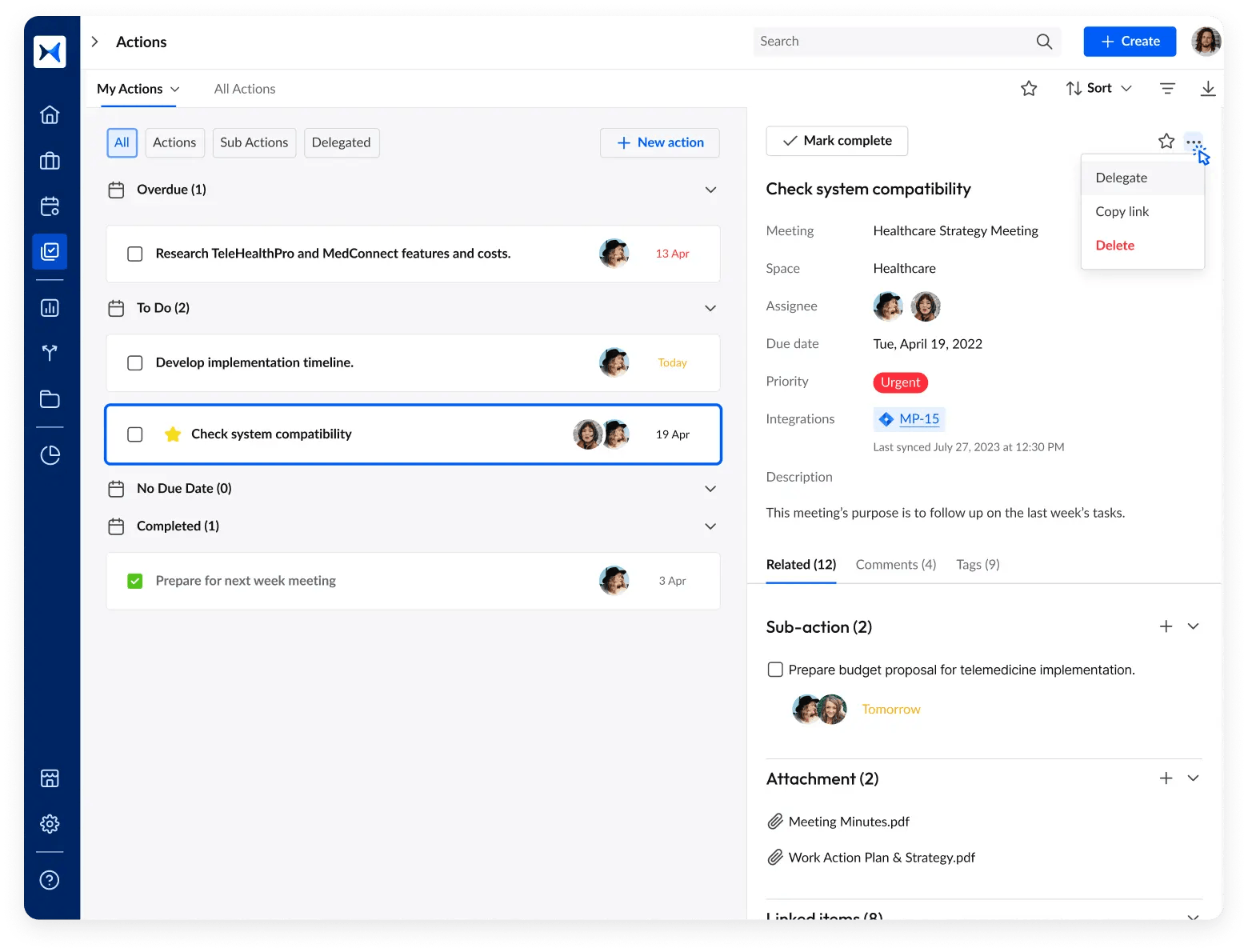
- Multi-space organization: Create dedicated spaces for different phases of digital transformation projects, from strategic planning to execution and evaluation. This helps project managers coordinate efforts across departments, ensuring smooth cross-departmental collaboration.
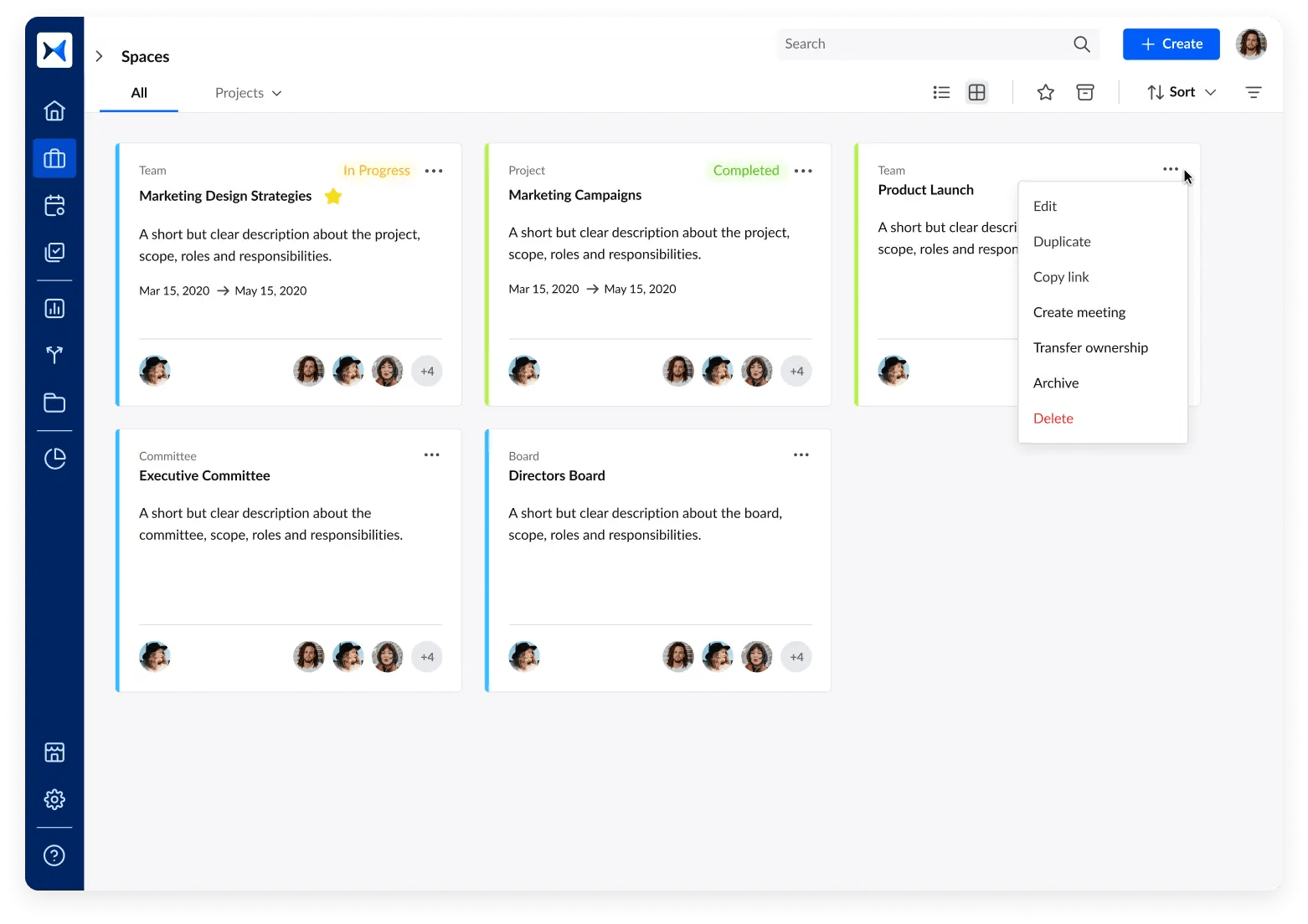
- Automated meeting minutes: With automatic meeting minute generation, adam.ai captures all decisions, discussions, and follow-ups during transformation meetings. This ensures that every aspect of digital initiatives is documented and readily available for future reference.
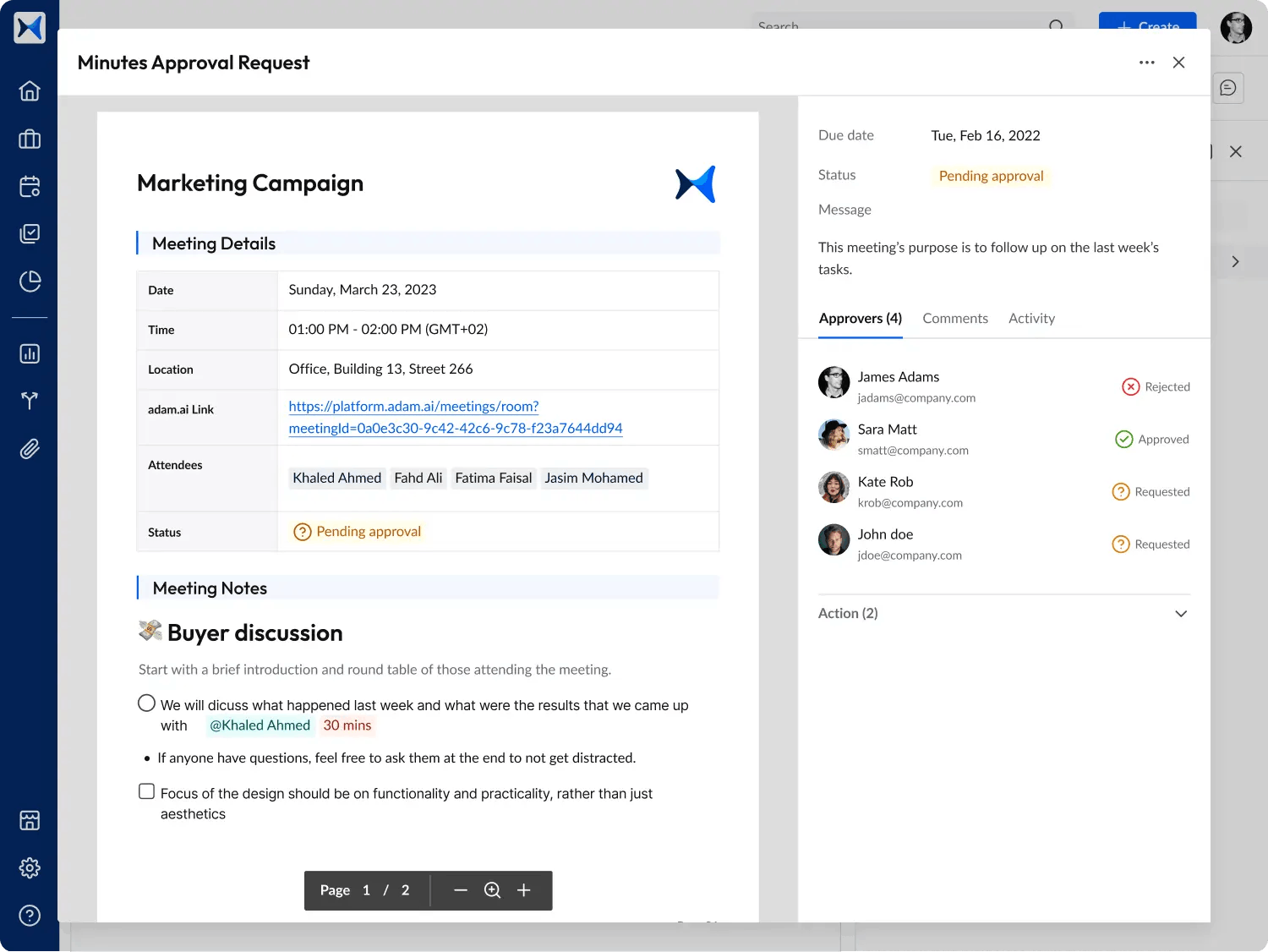
- Voting and decision management: Streamline decision-making processes by conducting real-time polls and tracking votes on key digital transformation strategies. This feature promotes transparency and inclusivity in decision-making, helping teams stay agile and responsive.
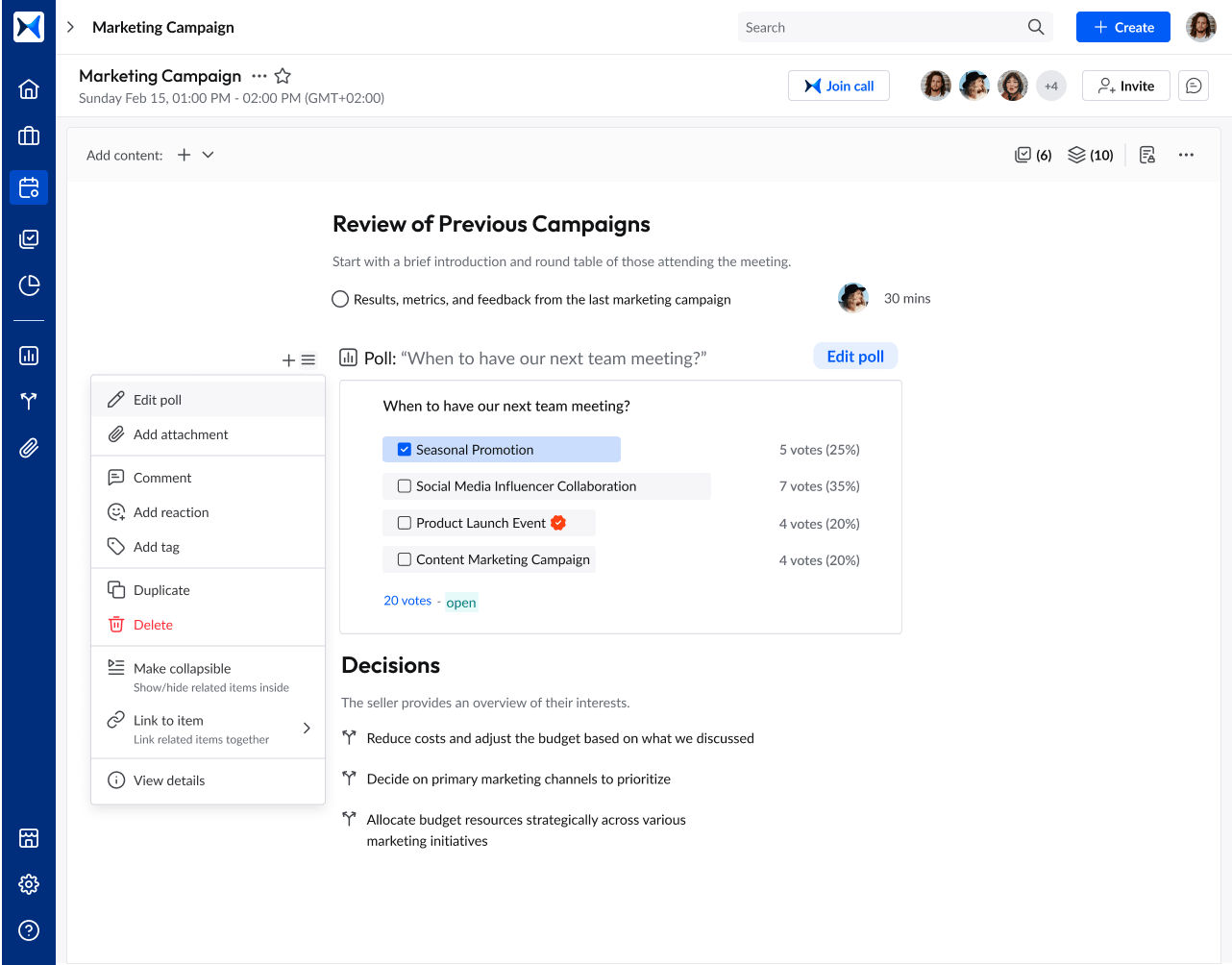
- Analytics dashboard for project insights: Leverage adam.ai’s advanced analytics to gain valuable insights into project performance, track participation, and assess the progress of digital transformation initiatives. Data-driven decision-making is key to optimizing project outcomes and ensuring success.
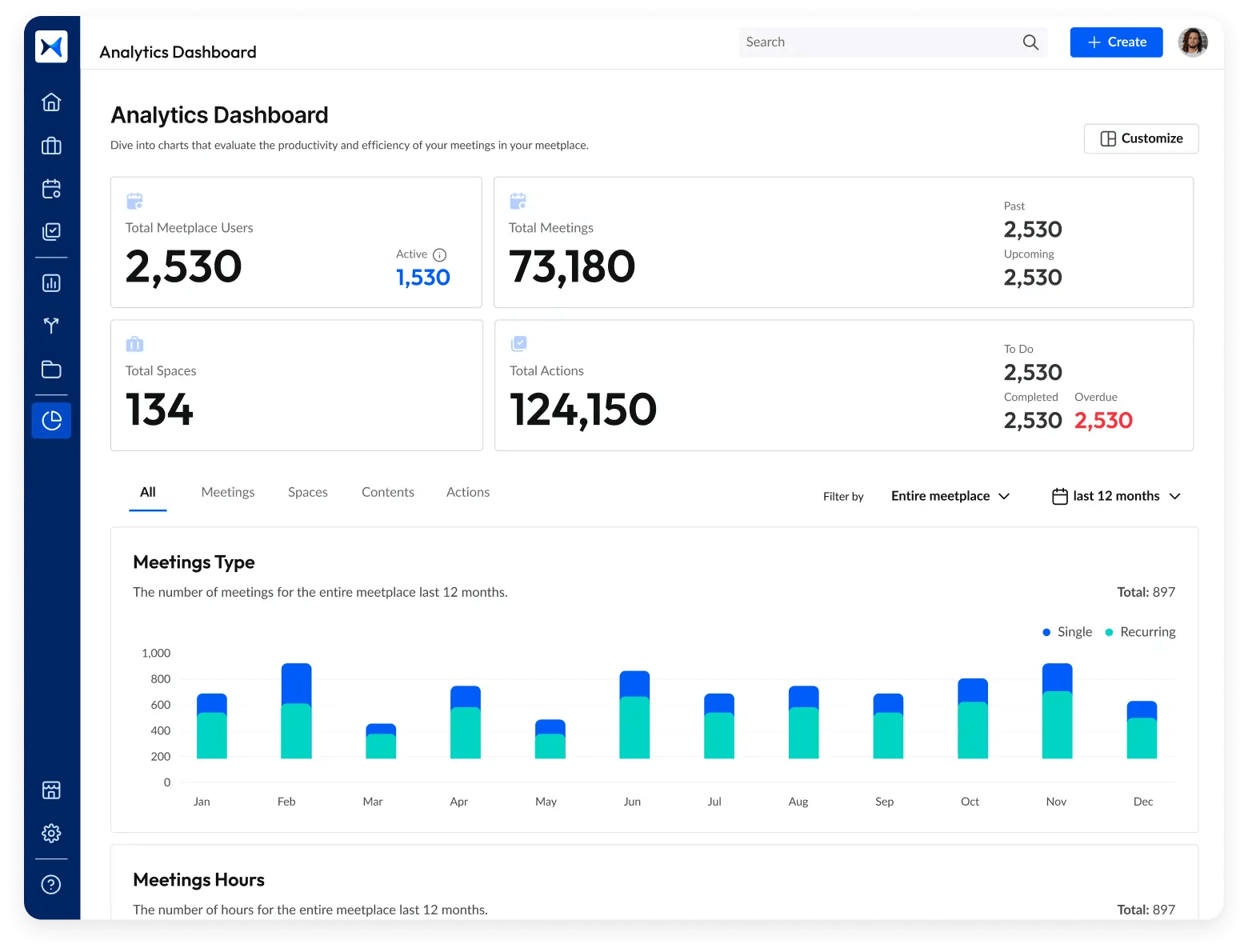
The bottom line
Digital transformation is no longer a future initiative but a present reality shaping the way projects are managed. By embracing cutting-edge tools, fostering collaboration, and staying agile, organizations can unlock new levels of efficiency and innovation.
And while there may be multiple solutions available, here is why adam.ai is the meeting management software platform you can trust:
- adam.ai is one of Atlassian Ventures' portfolio companies.
- In the meeting management software category on G2, adam.ai has been ranked a leader and a high performer for successive quarters in the past years.
- adam.ai has been included in the Forrester Report in the AI-enabled meeting technology landscape.
- adam.ai is trusted and used by powerful teams and organizations worldwide for all types of critical meetings, like board, committee, project management, and business development meetings.
- And most importantly, adam.ai integrates with your existing workflow, is SOC2 compliant, provides dedicated support and success, and has a free trial option.
Subscribe to adam.ai blog
Stay ahead with the latest insights—get our newest blog posts, tips, and updates sent straight to your inbox.